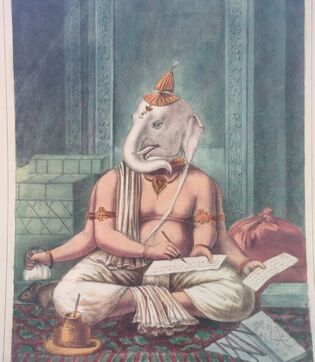|
The more that I talk with people about their state of wellbeing, I realize how pivotal it is for Ayurveda to shine at this point in history. I also realize, many are not familiar with Ayurveda and what it actually is. How can we use this incredible ancient healing modality in our current time in history? What exactly is Ayurveda and how can we apply this to our daily lives? What is my dosha and unique expression of the elements? I find that it is important to go back to the basics so we can truly grasp an idea of what Ayurveda is and how we can use this ancient science as a tool for our health and wellness.
Ayurveda is the science of life, the science of self-realization, and the knowledge of life. Ayur means life and Veda means knowledge/truth/or science. Dating back to 5,000 years ago, the first written expression of Ayurveda can be found in the Artharva Vedic text from 1,500 BCE that mentions 125 botanical plants and their healing properties. Of course, Ayurveda existed as an oral tradition well before written text. One interesting thing to note about Ayurvedic texts is the physicians, whom were seers cognizing this knowledge, edited and expanded upon previous written text based on experiential trial and error. Therefore, Ayurveda is both traditional and experimental in nature. Ayurveda also acknowledges that one size does not fit all. We are all unique expressions of the elements and embody a constant flow of balance and imbalance from environmental, emotional, and diet-based factors. Ayurveda approaches healing from a truly holistic perspective, embodying mind, body, and spirit. As the soul of Ayurveda is held in a deeply cultural and ritualistic tradition, you cannot practice Ayurveda without taking into consideration the spirit of existence. The root of Ayurveda is held in Sankhya Philosophy, or a creation philosophy, that describes the journey of consciousness into matter. We are all in a state of illusion that we exist solely as our functioning bodies, yet we are much more connected to the cosmos then we think. So, in Ayurveda we really seek and value self-realization to fully understand ourselves as a whole being observing and existing in the world. The three doshas, vata, pitta, and kapha, are the “humors” comprised of the five elements in our bodies. We all have these three doshas circulating within us, however the quality and quantity of each varies. Vata is ether and air. Pitta is fire and water. Kapha is water and earth. Dosha is best translated as “organization” because when in balance, or organized properly with our prakruti (unique constitution) we are in a state of health. When they become out of balance, vikruti, we are in a state of imbalance or di-ease. This can show up in our mental, emotional, or physical beings. The true goal is to get back to the state of our prakruti so that we are happy and healthy. Vata individuals are typically slender and love to move. They are creative, adaptable, enthusiastic and love change. Vata type individuals tend to furiously spend money, particularly at the thrift store as they love old antiques. They typically wear bright colors and mismatching patterns. They are artistic and have a true joy for life. When out of balance, a vata predominate individual will be fearful, anxious, nervous, forgetful, spacy and will be prone to vata digestion such as constipation and bloating. Nourishing and grounding tools are necessary to get vata back to balance. Pitta individuals have a moderate body built with well-defined muscles. They may have many freckles and moles and are fiery in appearance and personality. Pitta types are extremely intelligent, ambitious, passionate, and organized. When out of balance, pittas can be judgmental, angry, jealous, and unyielding. Heat in the body is a sign of high pitta. Serenity and cooling practices are best for a pitta who is out of balance. Cooling foods such as cilantro, lime, coconut will help to keep a pitta cool, calm, and collected. Kapha individuals have large, beautiful eyes and thick lustrous hair. Kapha types are more prone to carrying extra adipose tissue on their body and tend to have slow, steady movements. Kapha personalities are welcoming, loving, forgiving, and caring however can become attached, depressed, or possessive when out of balance. Energizing, stimulating, and warming foods and practices are best to keep kapha motivated and moving.
0 Comments
Leave a Reply. |
Beverly's BlogArchives
September 2023
Categories
All
|
850 Siskiyou Blvd, Suite 3 Ashland, OR
[email protected] : (803) 446-4331
[email protected] : (803) 446-4331

